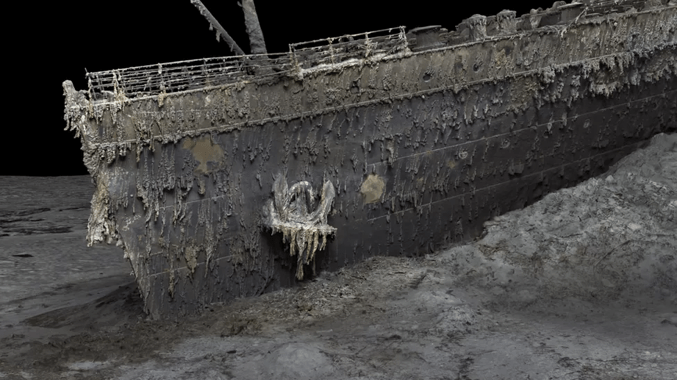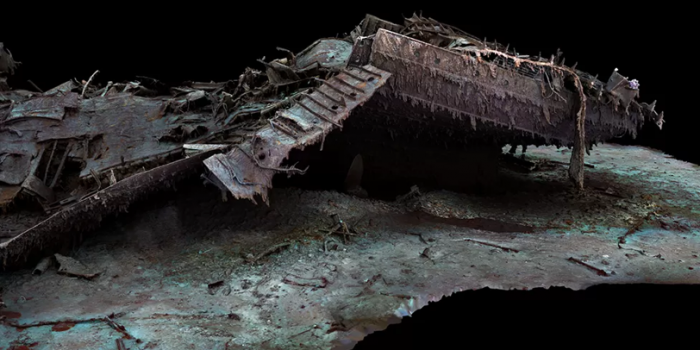The ill-fated Titanic, which sank in 1912 after colliding with an iceberg, has been visualized in full for the first time.
This groundbreaking achievement comes as a result of the largest underwater scanning project ever undertaken by researchers. By creating a detailed 3D scan of the shipwreck, valuable insights about the Titanic’s tragic journey across the Atlantic over a century ago may be revealed.
The comprehensive model of the Titanic was constructed using data obtained from deep-sea mapping conducted during a six-week expedition in the summer of 2022. Two submersibles named Romeo and Juliet were utilized to gather this information from the North Atlantic wreck site, located at an astonishing depth of nearly 4,000 meters (13,123 feet). In total, a vast amount of 16TB of data was collected from the wreckage.
The high-resolution images of the Titanic’s remains, published by the BBC, offer an intricate reconstruction of the shipwreck. Scientists involved in the project are hailing this achievement as a “game-changer” that has the potential to “completely rewrite” our understanding of the disaster.
The Titanic, once the largest ocean liner of its time and equipped with advanced safety features like watertight compartments, tragically claimed the lives of approximately 1,500 people on its maiden voyage from Southampton, England to New York City, USA, after colliding with an iceberg on April 15, 1912.

Notably, the researchers carried out their study without causing any disturbance to the wreck. To pay tribute to the deceased, the team conducted a flower-laying ceremony. Since the initial discovery of the shipwreck in 1985, which was situated around 650km (404 miles) off the coast of Canada, extensive exploration has taken place. However, until now, cameras have been unable to capture the ship in its entirety.
The momentous reconstruction of the Titanic was accomplished in 2022 through the collaboration of deep-sea mapping company Magellan Ltd and Atlantic Productions, who are concurrently producing a documentary about the project. Gerhard Seiffert, the lead planner for the expedition from Magellan, revealed that no physical contact was made with the wreckage to prevent any damage.
In addition, he also explained the challenges faced during the mapping process, including the need to meticulously document every square centimeter of the debris field, even the seemingly uninteresting areas filled with mud. These details are vital for filling gaps between the more significant objects of interest.
These newly obtained scans hold the potential to shed further light on the Titanic’s untold story. Historians and scientists are racing against time as the ship continues to deteriorate.
Parks Stephenson, a long-time Titanic researcher, expressed his enthusiasm for the project, stating that for the first time, we have the opportunity to view the Titanic without any human interpretation. This visualization is directly derived from the evidence and data retrieved.

According to Stephenson, there is still much to be learned from the wreck, which essentially serves as the last surviving witness to the tragic disaster. However, he emphasized that the Titanic has stories to tell.
With the ship disintegrating over time, the urgency to learn from the Titanic’s remains is evident. By examining the newly acquired scans, researchers and historians aim to unravel more details about this historic maritime disaster and let the ship’s silent testimony speak for itself.


